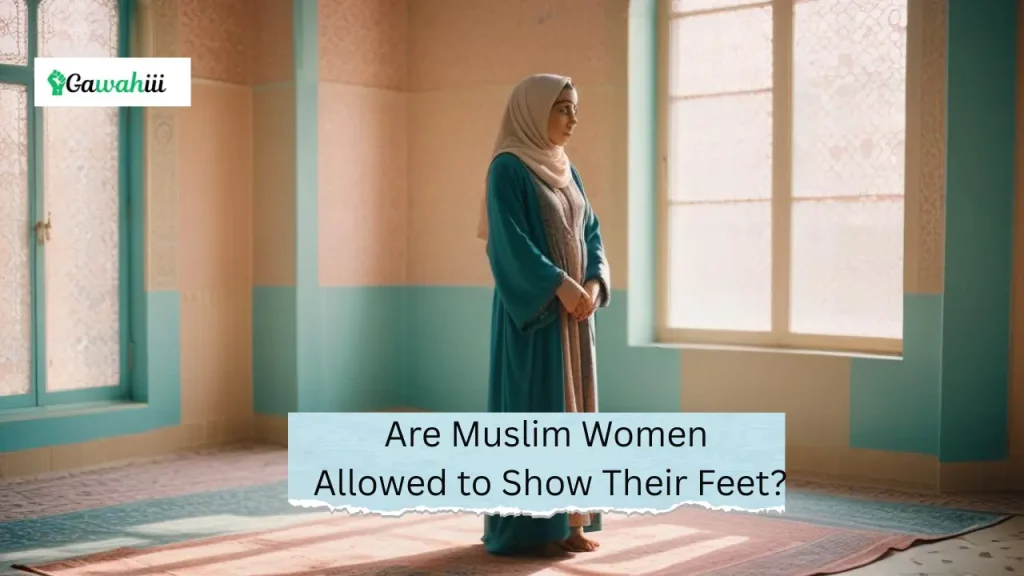Introduction
People trying to make sense of Islamic dress codes often wonder, are Muslim women permitted to display their feet? This subject covers faith, humility, and personal choice, whether you are investigating cultural customs or attempting to honor a loved one’s beliefs. This blog article will investigate the subtleties of Islamic rules on women’s dress, especially on whether exhibiting feet is consistent with these standards. Addressing often asked questions and highlighting many viewpoints, let us unravel this with respect and transparency.
In Islam, what is modesty?
A fundamental tenet of Islam, hijab guides men and women in their clothes and conduct. For women, modesty sometimes means covering certain portions of the body, but the specifics differ depending on interpretations and civilizations. Emphasizing dignity and privacy, these rules build on the Quran and Hadith. Knowing these origins clarifies concerns, including if Muslim women can exhibit their feet.
This debate revolves around the idea of awrah, which refers to portions of the body that should be concealed. Although the Quran does not directly mention feet, academics follow general guidelines to decide what is acceptable. This results in varied customs all around, influenced by culture, temperature, and personal preference.
From the Islamic view on covering the body
The Hadith and Quran provide most of the Islamic teachings on women’s clothes. Women are counselled in Surah An-Nur (24:31) to “draw their veils over their bosoms” and cover their decorations save what is obvious. Scholars dispute what “except what is apparent” embraces; some claim it embraces the face, hands, and feet.
According to compilations of hadith like Sahih al-Bukhari, women during the Prophet’s time frequently left their feet and hands uncovered during regular chores. Interpretations, though, vary among Hanafi, Maliki, Shafi’i, and Hanbali, each offering distinct viewpoints on awrah.
Feet: Part of a Woman’s Awrah?
Depending on the academic and school of thinking, feet could or may not be regarded as part of a woman’s awrah. Here follows a breakdown:
- – Hanafi School: Generally not regarded as awrah; feet imply that women can expose them in public provided modesty is kept up.
- School of Maliki: Though masking them is advised in formal situations, feet are frequently excluded from awrah, just like in Hanafi.
- School of Shafi’i: Some researchers include feet in awrah, thus suggesting coverage, especially in mixed surroundings.
- School Hanbali: Usually regarded as awrah, feet should be covered for maximum modesty.
These variations imply that Muslim women’s showing of their feet is contingent on their preferred interpretation or cultural expectations. For instance, Pakistan allows women to wear sandals sans stockings; tighter versions favor closed shoes or socks.
Cultural Effects on Showing Feet
Culture is a significant factor in the execution of Islamic clothing standards. For example, in India ladies often wear traditional attire like salwar kameez when sandals show their feet. In numerous Muslim societies, this is generally tolerated. Conversely, cultural customs in some Middle Eastern nations favor covering feet in public venues.
Muslim women in the United States negotiate a mix of religious and cultural expectations. To fit their definition of modesty, some pick open-toe shoes; others go for socks or closed shoes. The variety in practice reveals that there is no one-size-fits-all response regarding whether Muslim women are permitted to display their feet.
Muslim women’s practical issues
Muslim women sometimes weigh practical issues when trying to determine if they should display their feet:
- Environmental: Open footwear is rather popular in hot areas like Pakistan or India for comfort.
- Occasion: Formal occasions could call for covered feet; casual environments allow more flexibility.
- Individual Comfort: Some women find it easier to cover their feet than others do.
- Community standards: Whether showing feet is OK depends often on local customs.
These elements emphasize that modesty is a practical as well as a spiritual decision molded by personal and group environments.
Table: Footwear Choices Across Muslim-Majority Regions
|
Region |
Common Footwear |
Cultural Notes |
|---|---|---|
|
Pakistan |
Sandals, flip-flops |
Feet often visible in casual settings |
|
India |
Sandals, jutti |
Open footwear common with traditional attire |
|
Middle East |
Closed shoes, socks |
Stricter norms may favor covered feet |
|
USA |
Mixed (sandals, boots) |
Varies by personal and community preference |
Common misconceptions regarding Islamic clothing regulations.
Many misunderstandings exist around Islamic clothing standards, especially about women’s feet. Here are a handful:
- Myth: At all times, all Muslim women must cover their feet.
- Reality: This relies on cultural customs and understanding of awrah.
- Myth: Showing one’s feet is, by nature, immodest.
- Reality: Many academics agree that feet can be presented subtly, especially in laid-back environments.
- Myth: All Muslim women adhere to the same laws.
- Reality: Practices differ greatly according to cultural, regional, and personal factors.
By debunking these ideas, one helps to appreciate different traditions and develop respect.
Muslim Women Negotiate Modern Fashion
Muslim women today easily combine modesty with modern fashion. Stylish, understated footwear, such as embellished sandals or breathable sneakers, offered by brands, fits Islamic norms. In the US, designers provide elegant, open-toe choices honoring individual interpretations of modesty to satisfy Muslim women.
Traditional shoes such as juttis or kolhapuris in India and Pakistan go with basic clothes while still letting feet be seen. This equilibrium reveals how Muslim women integrate religious ideas to fit modern lifestyles, thereby making decisions that resonate with them.
FAQs
In public, are Muslim women permitted to display their feet?
It is contingent upon the Islamic philosophy and cultural conventions. Often allowing visible feet, Hanafi and Maliki institutions may suggest covering them. Additionally relevant are individual choice and context.
May Muslim women put on open-toe sandals?
Yes, many Muslim women wear open-toe sandals, particularly in informal contexts or in warmer climates like India and Pakistan. It fits with interpretations that deny feet from awrah.
Should one cover their feet during prayer?
Most academics concur that because prayer demands complete modesty, feet should be covered when praying. Women usually wear socks or cover their feet.
What impact do cultural conventions have on whether Muslim women expose their feet?
Cultural conventions have a great bearing on this. Visible feet are conventional with traditional Indian clothing, while in some Middle Eastern countries covering feet is more common in public.
In Islam, is displaying feet seen as improper?
Not definitely. Many academics and communities believe that showing feet is allowed, particularly if done courteously and in accordance with local traditions.
Can Muslim women paint their toenails if their feet are visible?
Yes, as long as it doesn’t conflict with ritual purity (nail polish must be removed for wudu for prayer, for instance). Many women express themselves with simple nail art.
Conclusion:
Whether Muslim women are permitted to display their feet has no one answer; it is determined by religious readings, cultural expectations, and individual preferences. The variety is tremendous, ranging from Hanafi academics allowing visible feet to cultural customs in Pakistan using sandals. Muslim women all over negotiate these rules creatively, juggling faith and fashion.
Investigate our related pieces if you want to learn more about Islamic modesty or cultural customs. Knowledge of these subtleties helps us to value many points of view and develop respect. How do you view this subject? Below, please share your ideas!







